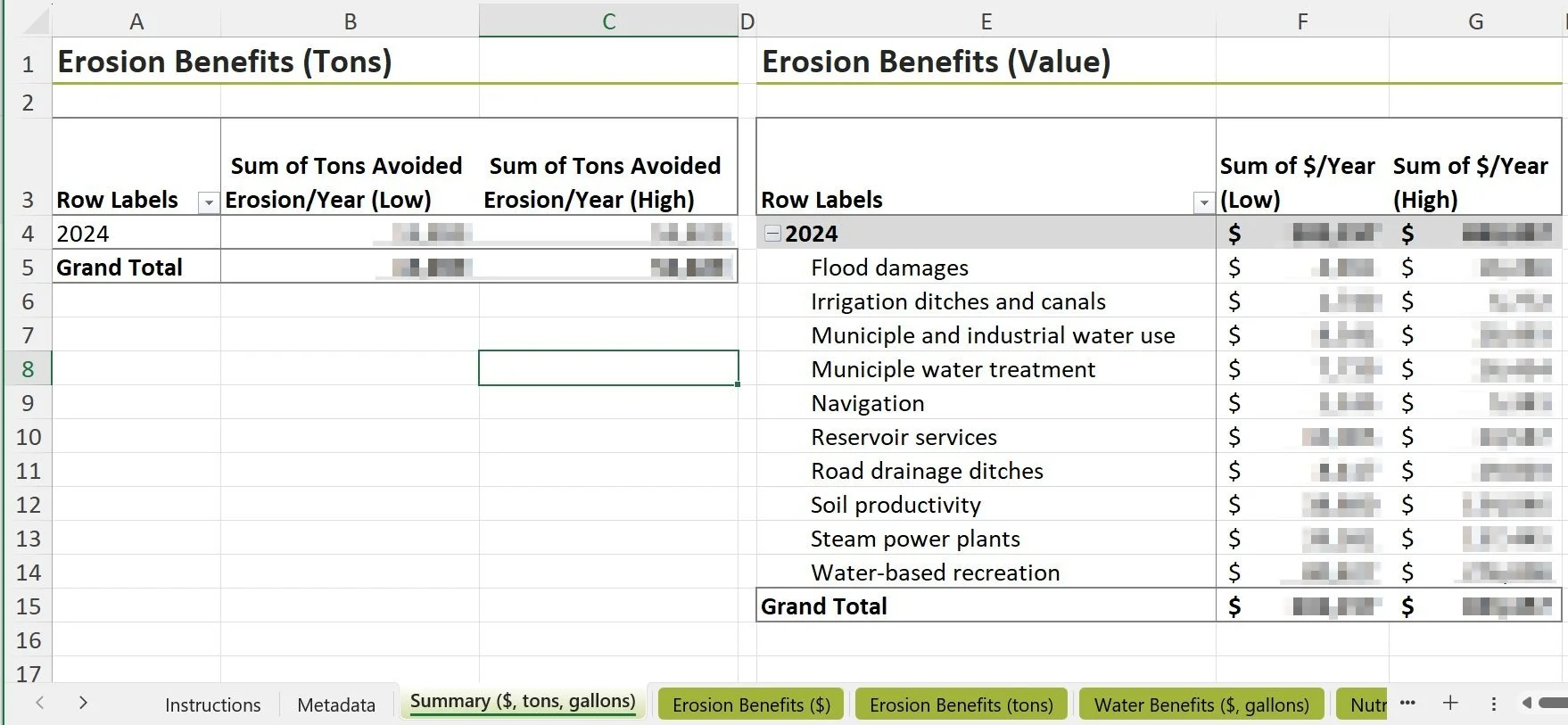Land Use
Land use decisions occur at all levels of government, from zoning to development, and from recreation to agriculture. Earth Economics provides the vital data and analysis that highlight the benefits of working with nature to meet your overall project goals.
Case Study
Building Value Underground: Soil Health and Quality Valuation Tool
In 2023 and 2024, Earth Economics partnered with Iroquois Valley Farmland REIT to produce an in-house Soil Health and Quality Valuation Tool (SHAQ) to track the benefits produced by farms in their portfolio.
Founded in 2007, Iroquois Valley’s vision is to transform agriculture through organic land stewardship within a generation. As a certified B Corp, the company works with impact-driven investors to provide capital to organic, regenerative, and transitioning farmers across America through long-term leases, flexible mortgages, and post-investment support.
Benefits included in SHAQ
The benefits of regenerative practices—like cover cropping and prescribed grazing—include improved yields, higher net revenues, and better soil health. However, improvements in soil quality—as with other ecosystem goods and services—are often ignored in conventional natural asset valuations. This means that decisions about land management are made without understanding the full value of regenerative practices.
Because the benefits of many ecosystem services "flow" across boundaries, some produce public value "beyond the fence line." Others, like improved soil quality, are more directly affected by the bottom line for each operation and producer. The following ecosystem service benefits were valued in the tool:

Earth Economics developed SHAQ to understand the value of soil health improvements based on best management practices (BMPs) on farms in which Iroquois Valley has invested.





